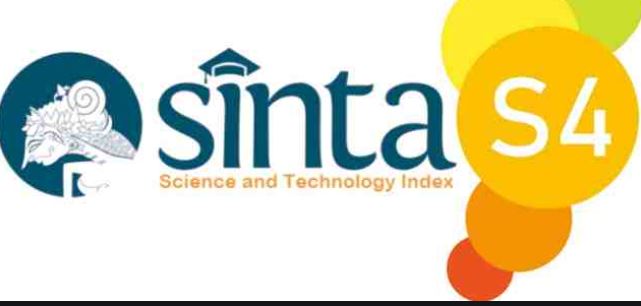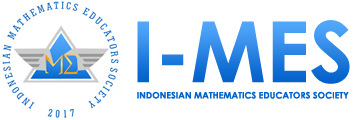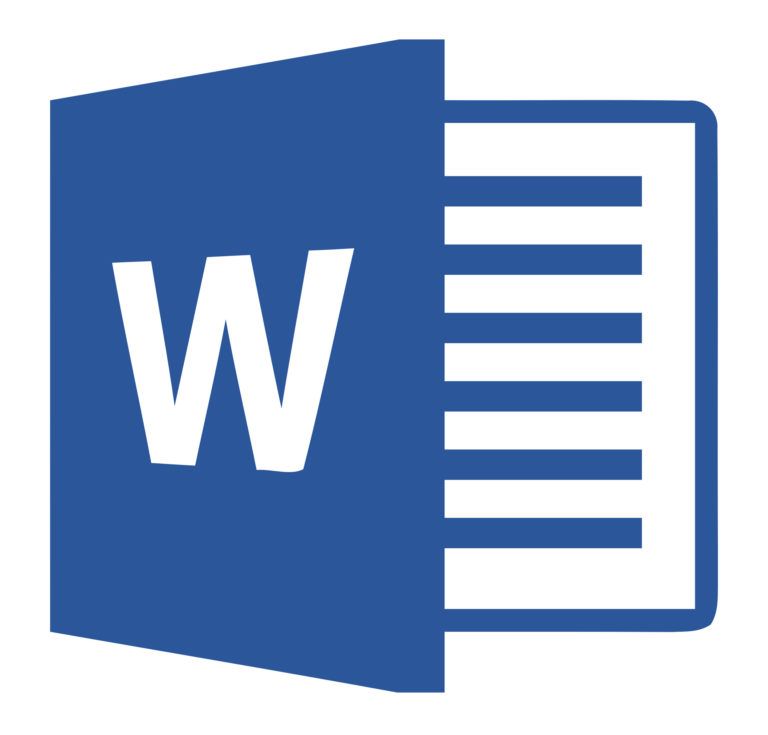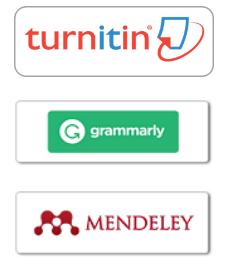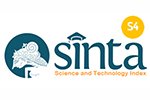THE USE OF MICROSOFT MATHEMATICS 4.0 TO IMPROVE STUDENTS' CONCEPTUAL UNDERSTANDING ABILITY
DOI:
https://doi.org/10.36706/jls.v7i1.87Keywords:
Microsoft Mathematics, Calculus, Mathematics, Instructional, Conceptual UnderstandingAbstract
This study evaluates the effectiveness of Microsoft Mathematics 4.0 in improving students' mathematical conceptual understanding on the topic of derivatives in calculus courses. Using an experimental method, the study involved 50 students who were divided into two groups, namely an experimental group with software-assisted learning and a control group with traditional methods. Data were collected through a mathematical conceptual understanding test and observation of student activity, then analyzed using descriptive and inferential statistics specifically the t-test. The results showed that Microsoft Mathematics 4.0 assisted learning is more effective than traditional methods in improving concept understanding as seen from the results of the t test stating that the significance value (0.00 <0.05). Students in the experimental group also showed higher activity, especially in visualizing abstract concepts such as the topic of derivatives. This software provides advantages through visualization and interactive features that make it easier for students to understand the relationship between mathematical concepts. However, this study has limitations in terms of topic coverage, sample size, and does not evaluate long-term impacts. Further research is recommended to expand the topic of study, involve a larger sample, and examine the effects of this software over a longer period of time.
Downloads
References
Abdullah, N. A., Mukhtar, N. E. H., & Amran, N. (2020). Students’ perceptions towards mathematical software based learning. Sains Humanika, 12(3), 1–8. https://doi.org/10.11113/sh.v12n3.1085
Ahmad, A. M., Aziz, M. B. M., Salim, S. B., Shahrudin, M. S. B., & Bt Abdullah, W. M. (2021). The effectiveness of multimedia elements integrated into calculus learning using basical mobile application. AIP Conference Proceedings, 2423, 1–9. https://doi.org/10.1063/5.0075675
Atteh, E., Assan-Donkoh, I., Ayiku, F., Nkansah, E., & Adams, A. K. (2020). The use of technology among school mathematics teachers and students: The new wave of recommended instructions. Asian Research Journal of Mathematics, 16(5), 18–29. https://doi.org/10.9734/arjom/2020/v16i530189
Auliya, R. N., Pinahayu, E. A. R., & Adnyani, L. P. W. (2020). Pemanfaatan Microsoft Mathematics 4.0 dalam pengembangan pembelajaran matematika di SMA/SMK. E-Dimas: Jurnal Pengabdian Kepada Masyarakat, 11(1), 107. https://doi.org/10.26877/e-dimas.v11i1.4629
Churchill, D. (2005). Learning objects: An interactive representation and a mediating tool in a learning activity. Educational Media International, 42(4), 333–349. https://doi.org/10.1080/09523980500237757
Fahira, A. (2021). Pengaruh pendekatan STEM berbantuan Microsoft Mathematics terhadap pemahaman konsep matematis ditinjau dari tipe kepribadian siswa. Jurnal Ilmiah Pendidikan Matematika AL-QALASADI, 5(1), 44–51.
Guzmán, M. O., Castro, S. O., Acuña, F. M., & Malo, E. S. (2019). Importance of coupling the teaching methodologies of mathematics with the learning styles of digital natives. Journal of Physics: Conference Series, 1414(1). https://doi.org/10.1088/1742-6596/1414/1/012004
Habinuddin, E., & Binarto, A. (2020). Peningkatan kemampuan pemahaman kalkulus turunan berbantuan Geogebra. Sigma-Mu, 10(1), 58–65. https://doi.org/10.35313/sigmamu.v10i1.1688
Harsa, F. S. (2016). Integrasi ICT dalam pembelajaran matematika. Paedagogi: Jurnal Kajian Ilmu Pendidikan (e-Journal), 8(2), 158–162. https://doi.org/10.24114/paedagogi.v8i2.8165
Hohenwarter, M., Hohenwarter, J., Kreis, Y., & Lavicza, Z. (2008). Teaching and calculus with free dynamic mathematics software GeoGebra. 11th International Congress on Mathematical Education, 1–9.
Ilmadi, I., & Rusdiana, Y. (2019). Penggunaan Microsoft Math 4.0 untuk meningkatkan kemampuan pemahaman konsep matematis peserta didik. Jurnal Karya Pendidikan Matematika, 6(2), 15–19. https://doi.org/10.26714/jkpm.6.2.2019.15-19
Maharani, N. (2023). Analys of student contraints in completing integral topics. PENDIPA Journal of Science Education, 7(1), 53–57. https://doi.org/10.33369/pendipa.7.1.53-57
Mayasari, N., Hasanudin, C., Fitrianingsih, A., Jayanti, R., Setyorini, N., Kurniawan, P. Y., & Nurpratiwiningsih, L. (2021). The use of Microsoft Mathematics program toward students’ learning achievement. Journal of Physics: Conference Series, 1764, 1–6. https://doi.org/10.1088/1742-6596/1764/1/012132
Mendezabal, M. J. N., & Tindowen, D. J. C. (2018). Improving students’ attitude, conceptual understanding and procedural skills in differential Calculus through microsoft mathematics. Journal of Technology and Science Education, 8(4), 385–397. https://doi.org/10.3926/jotse.356
Monariska, E. (2019). Analisis kesulitan belajar mahasiswa pada materi integral. Jurnal Analisa, 5(1), 9–19. https://doi.org/10.15575/ja.v5i1.4181
Naganjaneyulu, V., Ali, S. M., Ali, M. I., Jabeen, M., & Naseeruddin, S. (2020). Microsoft Mathematics as a teaching and learning tool for mathematics. International Journal of Management and Humanities, 5(4), 55–59. https://doi.org/10.35940/ijmh.b1140.125420
Ningsi, G. P., Nendi, F., Jehadus, E., Sugiarti, L., & Kurnila, V. S. (2022). Analisis kesalahan mahasiswa dalam menyelesaikan soal kalkulus integral berdasarkan Newman’s error analysis dan upaya pemberian scaffolding. Jurnal Cendekia : Jurnal Pendidikan Matematika, 6(3), 2698–2712. https://doi.org/10.31004/cendekia.v6i3.1469
Noor, N. L., Fakhriyana, D., & Widiyastuti, W. (2023). Pengembangan kualitas guru matematika madrasah aliyah melalui modul dan pelatihan Microsoft Mathematics. Reswara : Jurnal Pengabdian Kepada Masyarakat, 4(2), 1356–1363. https://doi.org/https://doi.org/10.46576/rjpkm.v4i2.3300
Oktaviyanthi, R., & Supriani, Y. (2014). Pembelajaran kalkulus berbantuan Microsoft Mathematics. AdMathEdu, 4(2). https://doi.org/10.12928/admathedu.v4i2.4799
Oktaviyanthi, R., & Supriani, Y. (2015). Utilizing microsoft mathematics in teaching and learning calculus. Journal on Mathematics Education, 6(1), 63–76. https://doi.org/10.22342/jme.6.1.1902.63-76
Pranata, Y. A., & Kristianto, A. (2008). Visualisasi pembelajaran tekuk pada kolom dengan bantuan software berbasis perhitungan numerik. Jurnal Teknik Sipil, 4(1), 77–86. https://doi.org/10.28932/jts.v4i1.1298
Rabi, F., Fengqi, M., & Aziz, M. (2022). The impact of the use of Microsoft Mathematics calculus visualization on student’s attitude. American Journal of Creative Education, 5(2), 52–66. https://doi.org/10.55284/ajce.v5i2.803
Saefuddin, E., Darmanto, N., & Husna, H. A. U. (2023). Pemanfaatan teknologi informasi dan komunikasi sebagai media pembelajaran di Politeknik Negeri Media Kreatif. Jurnal TIK Dalam Pendidikan, 10(1), 33–37. https://doi.org/10.61476/xy1xwh12
Sitorus, B. R. (2022). Microsoft Sway dalam pembelajaran matematika di era digital. Integral : Pendidikan Matematika, 13(2), 28–38. https://doi.org/10.32534/jnr.v13i2.2350
Sormin, M. A., Agustina, L., Samosir, B. S., Herawati Parapat, L., Khairunnisa, K., & Karimah, A. (2023). Comparative study of water based on Microsoft Mathematics with traditional learning. Naturalistic: Jurnal Kajian Dan Penelitian Pendidikan Dan Pembelajaran, 8(1), 146–153. https://doi.org/10.35568/naturalistic.v8i1.4092
Sudihartinih, E., Hajizah, M. N., & Marzuki, M. (2021). Penggunaan teknologi digital pada perkuliahan matematika dasar untuk meningkatkan hasil belajar mahasiswa. Suska Journal of Mathematics Education, 7(1), 59–66. https://doi.org/10.24014/sjme.v7i1.11723
Supianti, I. I. (2018). Pemanfataan teknologi informasi dan komunikasi (TIK) dalam pembelajaran matematika. MENDIDIK: Jurnal Kajian Pendidikan Dan Pengajaran, 4(1), 63–70. https://doi.org/10.30653/003.201841.44
Svitek, S., Annuš, N., & Filip, F. (2022). Math can be visual-teaching and understanding arithmetical functions through visualization. Mathematics, 10, 1–14. https://doi.org/10.3390/math10152656
Tanjung, K., & Yahfizham. (2024). Pemanfaatan media pembelajaran matematika berbantuan aplikasi Microsoft Mathematics. Konstanta: Jurnal Matematika Dan Ilmu Pengetahuan Alam, 2(2), 84–90. https://doi.org/https://doi.org/10.59581/konstanta.v2i2.3155
Taufiq, T., Junaidi, J., & Mirunnisa, M. (2024). Media pembelajaran berbasis Software Microsoft Mathematics dalam pembelajaran aljabar untuk meningkatkan Self-Efficacy siswa SMP Negeri 1 Sakti. Jurnal Sosial Humaniora Sigli, 7(1), 576–584. https://doi.org/10.47647/jsh.v7i1.2432
Voskoglou, M. G., & Salem, A. B. M. (2020). Benefits and limitations of the artificial with respect to the traditional learning of mathematics. Mathematics, 8(4), 1–15. https://doi.org/10.3390/math8040611
Wahyuni, A. (2017). Analisis hambatan belajar mahasiswa pada mata kuliah kalkulus dasar. JNPM (Jurnal Nasional Pendidikan Matematika), 1(1), 10–23. https://doi.org/10.33603/jnpm.v1i1.253
Zakaria, E., & Salleh, T. S. (2015). Using technology in learning integral calculus. Mediterranean Journal of Social Sciences, 6(5S1), 144–148. https://doi.org/10.5901/mjss.2015.v6n5s1p144

Downloads
Published
How to Cite
Issue
Section
Citation Check
License
Copyright (c) 2025 Aswin, Achmad Salido, Rafika Meiliati, Dayana Sabila Husain

This work is licensed under a Creative Commons Attribution-NonCommercial-ShareAlike 4.0 International License.


